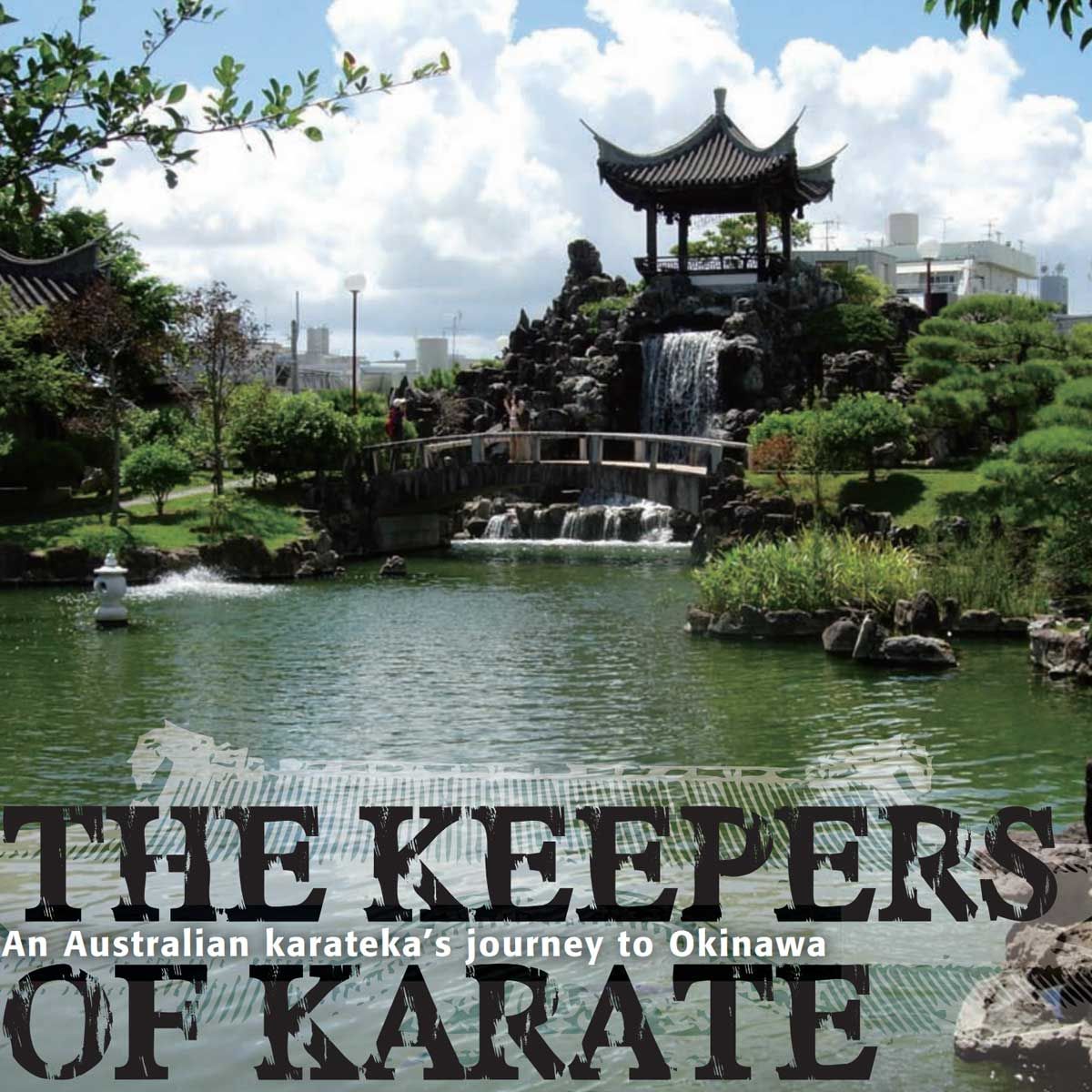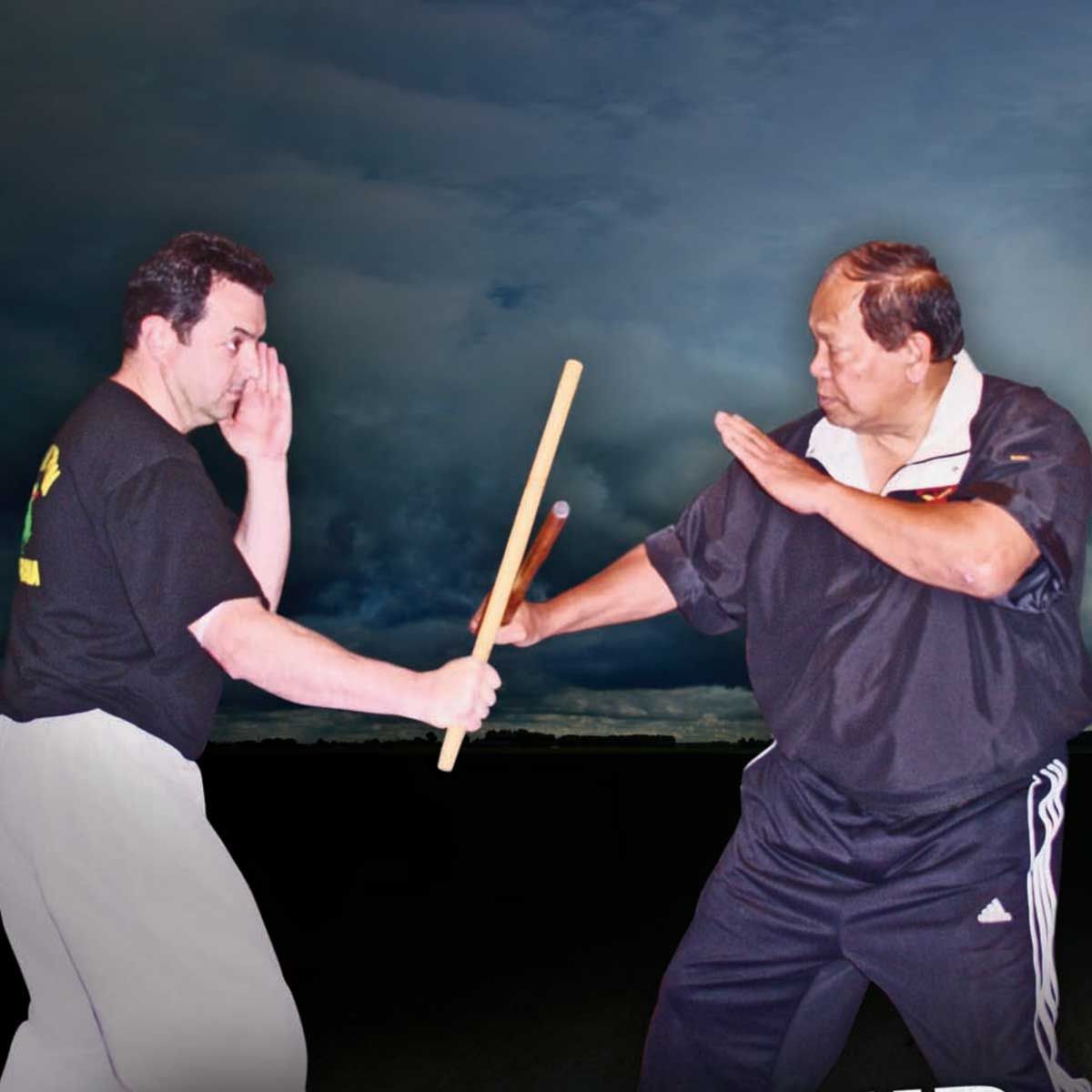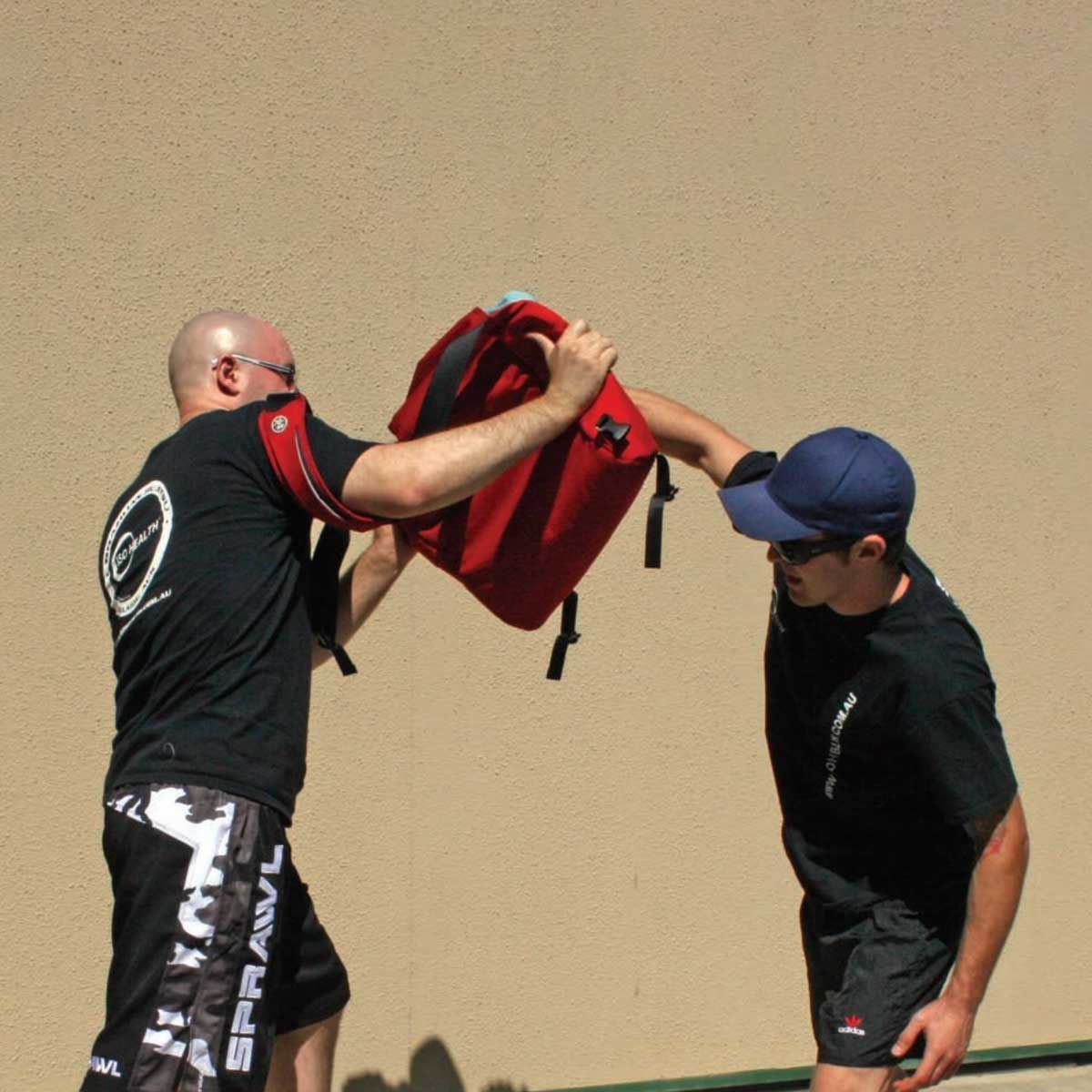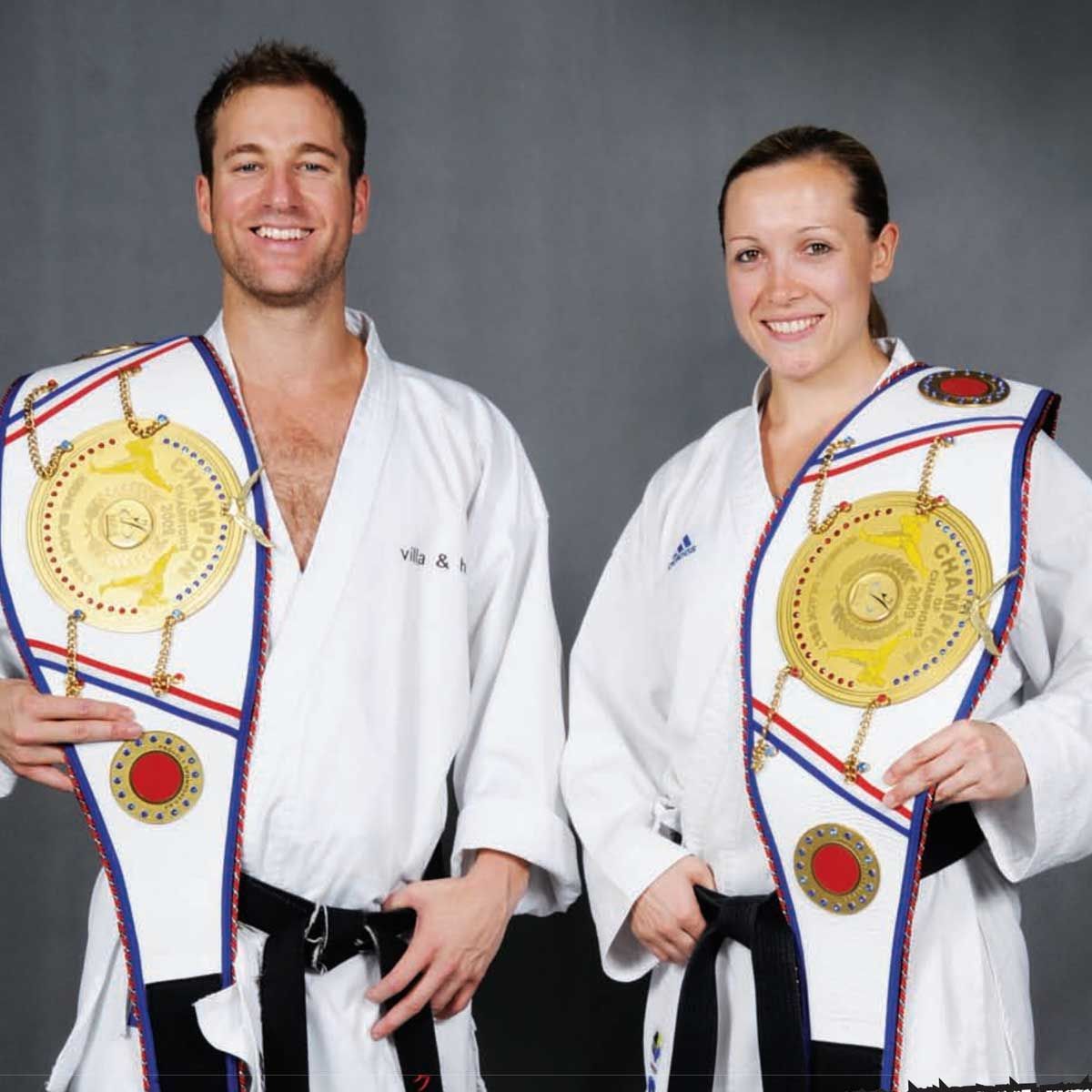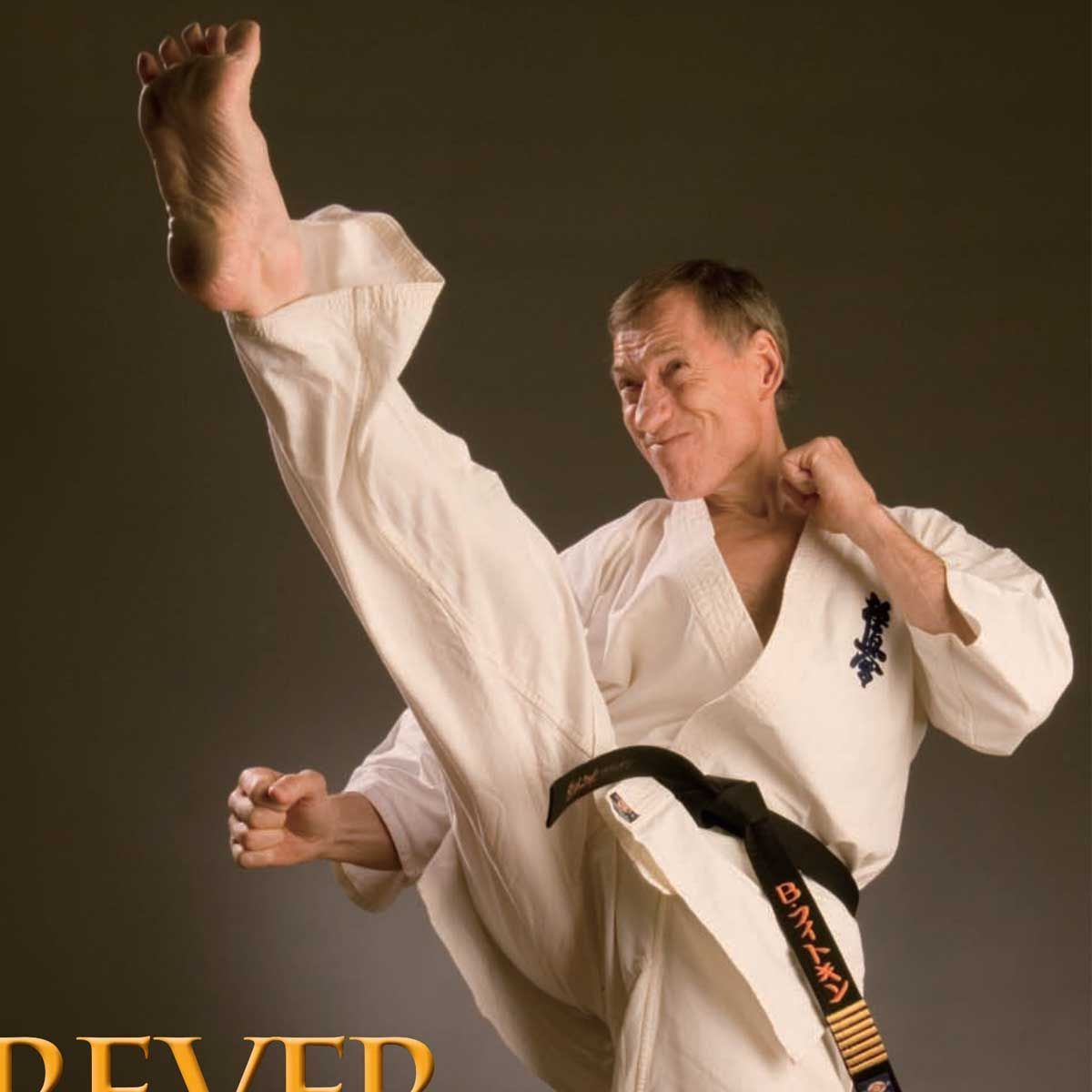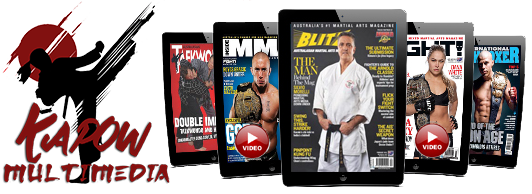WHY WEIGHT? - Mike Clarke
The reasons a karateka should lift weights For many involved in karate these days, the idea of working with weights to improve technique, speed and power is pushed to one side in the erroneous belief that such workouts will slow them down.
It’s not true! Working against the resistance offered by weights has always been a part of traditional karate training and on Okinawa, the birthplace of karate, it is called kigu undo (apparatus training) — and it’s just as important for today’s karateka as it was for those of old.
STORY BY MIKE CLARKE
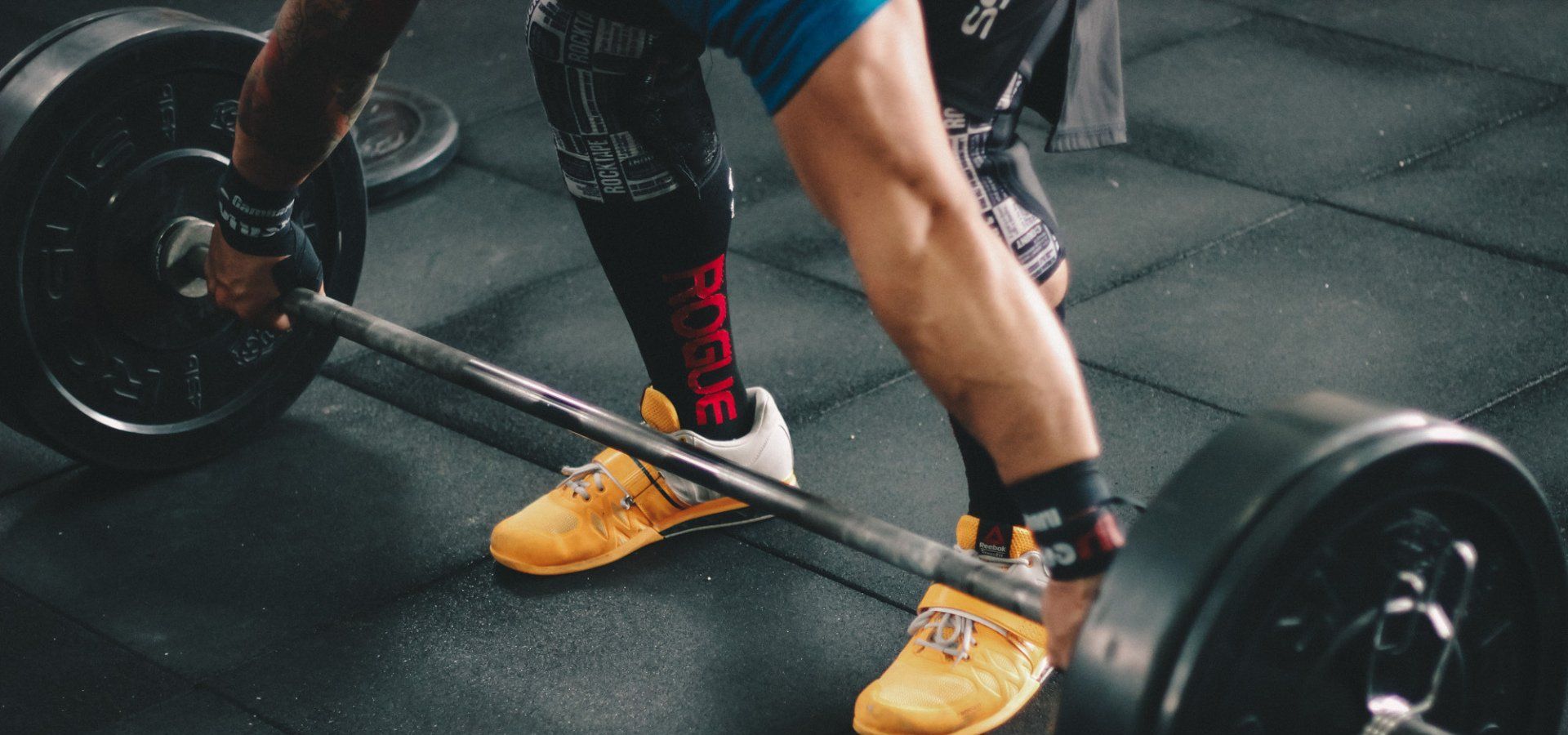
The various tools of kigu undo form a part of a larger aspect of training known as hojo undo (supplementary training) and fall into two main categories: the tools you lift and the tools involving impact. In this article we will look at a small sample of the lifting tools, and offer comparisons with some of the other weights being utilised in the world of martial arts these days, such as the kettlebell.
Before I go any further, I want to make it clear that I believe the choices we make lead us to where we are, so, whether you take the traditional Chinese/ Okinawan approach, use the modern weights down at your local gym, or grunt your way through an exhausting routine with a kettlebell, the focus of this article is to highlight that traditional karate should involve some kind of weight training. It also highlights one of life’s fundamental truths: that everything new is old.
So, regardless of which way we train, it’s better for our karate to use some form of resistance training rather than none at all. In past issues of Blitz, Pavel Tsatsouline has written some great articles on ways to train the body using a kettlebell and what looks like a modern approach to enhancing your martial arts ability — but even kettlebells have been around for about 300 years, so nothing new there. I’ve loved reading them and trying a few of the exercises myself.
In the past I’ve written articles on the tools used by Okinawan karateka, like the chi ishi (stone weight, which looks like a giant concrete lollipop) and the kongoken (iron ring); now I want to compare the two methods a little bit, and explore the differences and similarities.
KETTLEBELL VS CHI ISHI
At first glance these tools may not look like they have much in common, but look harder and they are actually quite similar. In both cases, the main body of weight is separate from the handle and therefore the grip used to control the tool. The chi ishi I’m using here is the less familiar version of the tool; it’s the double-handle type and weighs 23kg. Although not in commonly used in dojos around the world these days, it is in mine, and at the Jundokan dojo, where I train when in Okinawa.
Both tools can be used in a variety of ways, but I want to look at just one of them here: the swing. In Blitz Vol 22 No 4, Pavel demonstrate two exercises using the kettlebell. When I first saw them, I recognised both from my own training with the chi ishi and the kongoken. About the ‘swing’ Pavel writes, “To do the swing, grab a kettlebell with one or two hands, swing it hard and fast between your legs and then in front of you, up to chest level… keep your weight on your heels, sit back, load the hips, then snap them through.
Project your lower body power into your straight arm. Keep your back straight — not vertical, just straight (i.e. not rounded).” With the chi ishi exercise, the aim is similar: to give the body an overall workout, teach about the importance of breathing, the connection between the hips and power generation, and the necessity of being ‘fixed’ (grounded) with the floor in order to manipulate the tool with control. For karateka this is vital; if you can’t control the tool, you will never control a noncompliant opponent.
The chi ishi is swung between the legs, which at this point are slightly bent. When it swings upwards to the front, sit down in to shiko-dachi (straddle-legged stance) and lock the legs as the chi ishi reaches the apex of the swing at chest height. At that moment the back should be upright, the arms outstretched, and the legs fi xed fi rmly into a strong stance. This is held for only a brief moment, no longer than half a second, before allowing the tool to drop and begin another swing.
The breathing goes like so: in through the nose as the tool drops, and out through the mouth as the chi ishi swings back up. The last of the breath is expelled at the exact moment the weight is brought to a pause in front of the chest.
KETTLEBELL VS KONGOKEN
In the same article, Pavel demonstrated a second exercise, the press. Again I recognised this as something similar to an exercise done with the kongoken. This is how Pavel describes how to press with the kettlebell: “The one-arm kettlebell military press is akin to the bench-press in the West.
The rules are simple: the fist must be lower than the chin at the start of each press and the knees must remain locked. This is a lot harder than it sounds… the kettlebell press is done in an arc rather than straight up. Done by the book, this press not only works the shoulders and the triceps, but the entire upper body, including the abs and the obliques. The secret is staying tight from your toes all the way up to your fist. Tense your quads, cramp your glutes, crush the kettlebell handle.”
The corresponding lift with the kongoken, like the swing, differs a little in its execution but is similar enough to offer the same challenge; however, unless you are a pro-basketball player it is unlikely you’ll be tall enough to start this kongoken exercise with the fist below the chin. Still, the name of the game is to achieve a clean and safe press with the tool and to push yourself mentally as well as physically. Start by addressing the kongoken as seen in the photo.
Rather than ‘crushing’ the handle as with the kettlebell, allow the weight of the tool to rest in the open palm of the hand. Breathe in deeply through the nose before pushing the tool straight up on an outward breath; squeeze the glutes and tighten the abdominal muscles all the way to the top of the lift. Hold it for less than a second before allowing the tool to return under control. Unlike the kettlebell press, which has a curvature to the lift and retrieval, the kongoken press is straight and so does not work on the lats to quite the same degree when returning the tool.
However, the last are still the focus of our attention as we control the kongoken’s descent.
THE UPSHOT
Working with weights reveals a whole host of challenges not faced by karateka who spend most of their time training in thin air, or working with compliant partners who only ever use classical karate techniques against them. As I have already mentioned, the history of karate clearly shows the use of workout tools and other conditioning methods have always been an integral part of traditional training; and that hojo undo, and kigu undo in particular, is therefore ignored at our peril. If we consider ourselves ‘traditional’ karateka, we cannot simply pick and choose which parts of our tradition we’re prepared to preserve; besides, a tradition that diminishes a little with each generation is destined to fade away altogether. Looking around, it’s not too difficult to see this process happening in karate where, in the space of just a few decades, it has already gone from a deadly fighting art, to a pastime fit for children. The thin end of the wedge is clearly growing wider, but I for one will not be a part of it. To preserve karate’s methods and its power, working with weights is a must. Mike Clarke Sensei has been training in karate for 35 years and teaches Okinawan Goju-ryu karate at his Shinseidokan dojo in Launceston, Tasmania. He is a regular writer for Blitz and several other international martial arts magazines, and has authored four books on karate, including The Art of Hojo Undo: Power Training for Traditional Karate. □
Blitz Martial Arts Magazine, JANUARY 2010 VOL. 24 ISSUE 01, page 76






